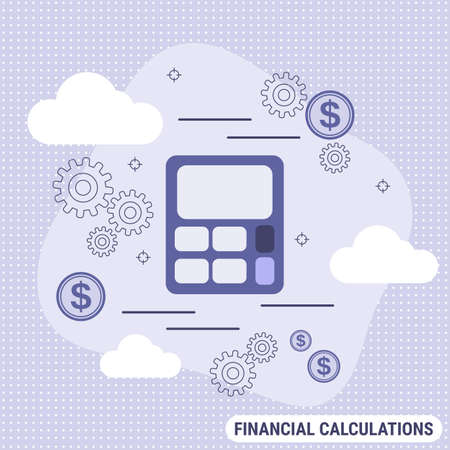1. Understanding the American Retirement Landscape
When planning for retirement in America, it’s important to understand the key factors that make the U.S. retirement system unique. Knowing how Social Security, employer-sponsored accounts like 401(k)s, individual retirement accounts (IRAs), and healthcare costs work together will help you figure out exactly how much money you’ll need to retire comfortably.
Social Security: The Foundation of Retirement Income
For many Americans, Social Security serves as a base layer of retirement income. This government program provides monthly payments based on your lifetime earnings and the age when you start claiming benefits. However, Social Security was never meant to be your only source of retirement income—it typically replaces about 40% of your pre-retirement earnings on average.
How Social Security Works
| Factor | Details |
|---|---|
| Eligibility Age | 62 (early), 67 (full), up to 70 (maximum benefit) |
| Average Monthly Benefit (2024) | $1,900 – $2,000 per person |
| Replacement Rate | Around 40% of pre-retirement income |
401(k)s and IRAs: Building Your Own Nest Egg
Most people in the U.S. rely on personal savings from workplace plans like 401(k)s or tax-advantaged accounts like IRAs to cover the gap left by Social Security. These accounts let you invest money during your working years so you can draw from them in retirement.
Comparing Popular Retirement Accounts
| Account Type | Main Features | Contribution Limits (2024) | Tax Treatment |
|---|---|---|---|
| 401(k) | Employer-sponsored, often with matching contributions | $23,000 (under 50) $30,500 (age 50+) |
Pre-tax or Roth (tax-free withdrawals) |
| Traditional IRA | Individual account with flexible investments | $7,000 (under 50) $8,000 (age 50+) |
Pre-tax; taxes due at withdrawal |
| Roth IRA | No upfront tax break; tax-free withdrawals in retirement | $7,000 (under 50) $8,000 (age 50+) |
No taxes on withdrawals if qualified |
Healthcare Considerations: A Major Retirement Expense
Healthcare is one of the biggest costs retirees face in America. Even with Medicare starting at age 65, out-of-pocket expenses for premiums, prescriptions, and long-term care can add up quickly. It’s crucial to factor these costs into your retirement plan.
Estimated Annual Healthcare Costs for Retirees (2024)
| Expense Type | Estimated Cost per Person/Year |
|---|---|
| Medicare Premiums & Deductibles | $2,000 – $5,000+ |
| Out-of-Pocket Costs (drugs, dental, vision) | $1,500 – $3,000+ |
| Long-Term Care Insurance or Services* | $2,000 – $7,500+ |
*Varies widely based on health needs and location.
The American retirement landscape is complex—combining public benefits with personal savings strategies and rising healthcare costs. Understanding these elements will set you up for more accurate and realistic retirement planning as you move forward.
2. Calculating Your Ideal Retirement Income
Figuring out how much money youll need each year in retirement might feel overwhelming, but breaking it down into simple steps can help you find a realistic target. Let’s walk through some common methods and key factors that will help you estimate your ideal annual retirement income.
Understanding Your Lifestyle Needs
Your desired lifestyle is the biggest factor in determining your retirement budget. Think about how you plan to spend your days: Do you want to travel frequently, eat out often, or pick up new hobbies? Or do you prefer a quieter, simpler life close to home? Make a list of your expected monthly expenses, including housing, food, utilities, healthcare, transportation, entertainment, and any other personal costs.
Sample Monthly Expense Breakdown
| Category | Estimated Monthly Cost ($) |
|---|---|
| Housing (rent/mortgage/taxes/maintenance) | 1,500 |
| Utilities (electricity/water/internet) | 250 |
| Groceries | 400 |
| Healthcare (insurance/out-of-pocket) | 600 |
| Transportation (car/public transit) | 300 |
| Entertainment & Hobbies | 250 |
| Travel | 200 |
| Miscellaneous | 200 |
| Total Estimated Monthly Expenses | 3,700 |
| Total Estimated Annual Expenses | 44,400 |
Accounting for Inflation and Cost-of-Living Differences
The cost of living in America can vary significantly depending on where you choose to retire. For example, cities like San Francisco and New York are much more expensive than places like Tulsa or Jacksonville. Be sure to research the average expenses for your preferred location. Also, remember that prices for goods and services tend to rise over time—a phenomenon called inflation. A good rule of thumb is to assume an annual inflation rate of about 2-3% when projecting your future needs.
Regional Cost-of-Living Comparison Example (2024 Estimates)
| City/Region | Average Annual Living Cost ($) |
|---|---|
| Phoenix, AZ (Moderate) | 45,000 |
| Austin, TX (Moderate-High) | 52,000 |
| Tampa, FL (Affordable) | 40,000 |
| Boston, MA (High) | 65,000 |
The 70-80% Rule: A Simple Starting Point
A common guideline is to aim for 70-80% of your pre-retirement income each year in retirement. This accounts for likely reductions in work-related costs (commuting, work clothes) but also recognizes that healthcare and leisure spending may go up.
The 70-80% Rule Example Table
| Your Pre-Retirement Income ($) | % Needed in Retirement | Your Target Annual Retirement Income ($) |
|---|---|---|
| 60,000 | 70% | 42,000 |
| 80,000 | 75% | 60,000 |
| 100,000 | 80% | 80,000 |
Tailoring Your Estimate: Personal Considerations Matter Most
No two retirees are exactly alike. Consider other factors such as outstanding debts (like mortgages), expected Social Security benefits or pensions, healthcare needs specific to your situation, and any plans for helping family members financially. Adjust your calculations accordingly so your estimate reflects your unique goals and needs.
Your Personalized Retirement Income Formula:
Total Annual Expenses × Adjustment for Inflation & Regional Costs = Your Ideal Retirement Income Goal
By taking these practical steps—and updating your estimates as life changes—you’ll be well on your way to building a retirement plan that fits the American lifestyle you envision.

3. Breaking Down the Big Expenses in Retirement
When planning for retirement in America, it’s important to get a clear picture of your biggest expenses. Understanding these major costs helps you estimate how much you’ll need to retire comfortably and avoid surprises down the road. Let’s take a closer look at the key categories: healthcare, housing, taxes, and travel.
Healthcare Costs
Healthcare is often one of the largest expenses for retirees. Even with Medicare, there are premiums, deductibles, copays, and out-of-pocket expenses for prescriptions and long-term care that aren’t always covered. Planning ahead means considering supplemental insurance or a Health Savings Account (HSA) if you’re eligible.
| Healthcare Expense | Estimated Annual Cost (per person) |
|---|---|
| Medicare Premiums (Part B & D) | $2,000 – $4,000 |
| Medigap/Supplemental Insurance | $1,500 – $3,000 |
| Out-of-Pocket (prescriptions, dental, vision) | $1,200 – $2,500 |
Housing Expenses
Your living situation in retirement can greatly impact your budget. Some people pay off their mortgage before retiring, while others may still have monthly payments or choose to rent. Don’t forget to include property taxes, maintenance, utilities, and homeowners’ insurance.
| Housing Expense | Average Monthly Cost |
|---|---|
| Mortgage/Rent | $1,200 – $2,500 |
| Property Taxes & Insurance | $300 – $600 |
| Maintenance & Utilities | $250 – $500 |
Taxes in Retirement
Your tax situation may change after you retire. While you might be in a lower tax bracket, Social Security benefits and withdrawals from retirement accounts like 401(k)s and IRAs are often taxable. Planning ahead can help you avoid unexpected tax bills.
Common Taxable Sources in Retirement:
- Pension income
- Traditional IRA/401(k) withdrawals
- Social Security benefits (may be partially taxable)
- Investment income (dividends and capital gains)
Travel and Leisure Activities
This is the fun part of retirement! Many Americans plan to travel more or enjoy hobbies once they stop working. Setting aside a portion of your retirement savings for vacations or leisure activities helps ensure you don’t have to pinch pennies while enjoying this new phase of life.
| Travel/Leisure Activity | Estimated Annual Cost |
|---|---|
| Domestic Travel (U.S.) | $2,000 – $5,000 |
| International Travel | $5,000 – $10,000+ |
| Hobbies/Recreation Memberships | $500 – $2,000+ |
By identifying and planning for these large expenses—healthcare, housing, taxes, and travel—you can build a more accurate retirement budget tailored to your American lifestyle and goals.
4. Building Your Nest Egg: Savings and Investment Strategies
Understanding Popular American Retirement Accounts
When planning for retirement in the U.S., choosing the right savings accounts can make a big difference. Here are some of the most common types:
| Account Type | Main Features | Tax Benefits | Contribution Limits (2024) |
|---|---|---|---|
| 401(k) | Employer-sponsored, often with matching contributions | Pre-tax contributions grow tax-deferred; pay taxes when you withdraw | $23,000 ($30,500 if age 50+) |
| Roth IRA | Individually opened, flexible investment options | Contributions made with after-tax dollars; qualified withdrawals are tax-free | $7,000 ($8,000 if age 50+) |
| Traditional IRA | Individually opened, broad investment choices | May be tax-deductible; grows tax-deferred, taxed at withdrawal | $7,000 ($8,000 if age 50+) |
| Health Savings Account (HSA) | Tied to high-deductible health plans; funds can be used for medical expenses now or in retirement | Contributions are tax-deductible; grows tax-free; tax-free withdrawals for qualified medical expenses | $4,150 (individual), $8,300 (family), extra $1,000 if age 55+ |
Savings Tactics That Work for Americans
- Start Early: The sooner you begin saving, the more time your money has to grow due to compounding interest.
- Automate Contributions: Set up automatic transfers from your paycheck or bank account into your retirement accounts.
- Take Advantage of Employer Match: If your employer offers a 401(k) match, contribute enough to get the full match—its essentially free money!
- Bump Up Contributions: Increase your savings rate every time you get a raise or bonus.
- Create an Emergency Fund: Keep at least three to six months’ living expenses in a separate account so you don’t have to dip into retirement savings early.
Investment Principles for Growing Your Money
- Diversify: Spread your investments across different asset classes like stocks, bonds, and real estate to reduce risk.
- Aim for Long-Term Growth: Don’t try to time the market. Focus on steady growth over decades rather than quick wins.
- Review and Rebalance: Check your portfolio once or twice a year and adjust as needed to maintain your target allocation.
- Watch Out for Fees: High fees can eat into your returns. Look for low-cost index funds or ETFs when possible.
- Consult a Pro: Consider working with a certified financial planner (CFP) to create a personalized plan that fits your goals.
Nest Egg Growth Example: How Saving Early Pays Off
| Starting Age | Monthly Contribution | Total Saved by Age 65 (at 7% annual return) |
|---|---|---|
| 25 | $400 | $1,058,912 |
| 35 | $400 | $502,257 |
| 45 | $400 | $211,407 |
No matter where you’re starting from, building a solid nest egg takes time and discipline—but with the right strategies and tools tailored for Americans, you can set yourself up for a comfortable retirement.
5. Adjusting Your Plan for Life’s Uncertainties
Planning for retirement is more than just crunching numbers—it’s about staying flexible and ready for whatever life throws your way. Even the best-laid plans can be disrupted by market downturns, surprise expenses, living longer than expected, or simply changing what you want out of life. Here’s how you can adapt your retirement strategy to stay on track, no matter what happens.
Be Ready for Market Ups and Downs
The stock market goes through cycles—sometimes it soars, sometimes it dips. If your retirement savings are invested in stocks or mutual funds, a market downturn can temporarily shrink your nest egg. To protect yourself:
- Diversify: Spread your investments across different asset types (stocks, bonds, real estate).
- Rebalance: Check your portfolio once or twice a year and adjust if one investment type has grown too big or too small.
- Don’t Panic Sell: Markets recover over time; selling at a loss locks in those losses.
Plan for Unexpected Expenses
No one likes surprise bills, but they happen—medical emergencies, home repairs, or helping out family members. Build a buffer into your plan so these costs don’t derail your retirement dreams.
| Expense Type | How to Prepare |
|---|---|
| Medical Bills | Consider supplemental insurance like Medigap or an HSA. |
| Home Repairs | Set aside 1-2% of your home’s value each year in a separate savings account. |
| Family Support | Create a “help fund” that won’t impact your day-to-day needs. |
Factor In Longevity
People are living longer than ever before, which means you might need to stretch your savings further. When planning, use conservative estimates—plan for 30 years of retirement or more. Consider annuities or other income products that guarantee payments for life to help cover basic expenses no matter how long you live.
Your Goals May Change—And That’s Okay
You might decide to move closer to family, travel less (or more!), or pick up a new hobby that costs money. Review your retirement plan every couple of years and adjust as needed. If your priorities shift, it’s important that your spending plan matches your lifestyle.
Quick Checklist: Staying Flexible
- Review your investments regularly
- Keep an emergency fund of at least 6 months’ expenses
- Update your plan as goals and circumstances change
- Consult with a financial advisor when big life events happen
This approach will help make sure you’re prepared for whatever comes next and keep you on the path to retiring comfortably in America.


